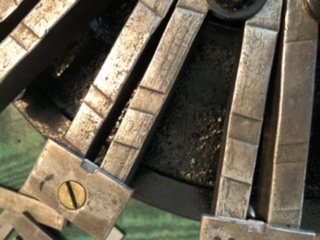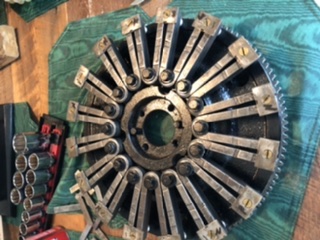Discuss all things Model T related.
Forum rules
If you need help logging in, or have question about how something works, use the Support forum located here
Support Forum
Complete set of Forum Rules Forum Rules
-
Topic author
MichaelPawelek
- Posts: 712
- Joined: Sun Jan 06, 2019 2:01 pm
- First Name: Michael
- Last Name: Pawelek
- * REQUIRED* Type and Year of Model Ts owned: 1919 Touring, 1925 Coupe
- Location: Brookshire, Texas
- Board Member Since: 1999
Post
by MichaelPawelek » Tue Oct 12, 2021 9:30 pm
Do the indentations have a function or are they there due to the manufacturing process?

L

-
Bryant
- Posts: 1187
- Joined: Sat Sep 11, 2021 3:11 pm
- First Name: Bryant
- Last Name: Shafer
- * REQUIRED* Type and Year of Model Ts owned: 1926 Tudor transforming to a closed cab pickup
- Location: Myersville Maryland
- Board Member Since: 2021
Post
by Bryant » Tue Oct 12, 2021 9:58 pm
mine has something similar. Probably manufacturing process

“Whether you think you can, or think you can’t-you’re right.”
-
Mark Nunn
- Posts: 1270
- Joined: Mon Jan 07, 2019 8:01 am
- First Name: Mark
- Last Name: Nunn
- * REQUIRED* Type and Year of Model Ts owned: 1926 Runabout
- Location: Bennington, NE
- Board Member Since: 2017
Post
by Mark Nunn » Wed Oct 13, 2021 8:46 am
The indentations are there to make the thickness of the magnets consistent. When metal or any malleable material is bent the material at the outer radius is pulled in tension. At the inner radius it is in compression. The material flows as the molecular bonds are broken and reestablished. The thickness of the magnet at the outside radius will become thinner than the base metal. Similarly, the inside radius of the bend will become thicker. In order to keep the thickness of magnets at bends consistent, a secondary stamping operation would be to used compress the bend to a specific thickness. The other ends of the magnets are stamped too to a certain thickness to set clearances. Stamping both the bend and ends of magnets at the same time also makes the manufacturing operation easier.
 L
L